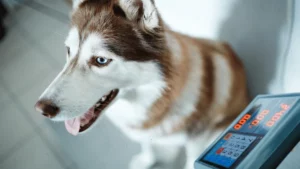Medical Emergencies Covered By Pet Insurance
When you sign up for the job of pet parent, you take on all the tasks connected to looking after your beloved furry friends, in sickness and in health.
Pet insurance is one must-buy item – along with the obligatory chew toys and a big food bowl – that all families need to consider. Pet insurance covers illnesses and chronic health issues, but the one major factor that prompts most people to purchase is medical emergencies.
What would you do if your four-legged friend suffered an auto accident or a sudden illness? Would you be able to afford to pay out-of-pocket for emergency care in the middle of the night? The cost of an emergency vet runs high. Pet insurance saves you money, and stress. But what exactly is a medical emergency covered by pet insurance? And how do you know whether to take your pet to a vet right away, or when it’s best to wait until morning?
Here we investigate the practicalities of emergency treatment, and discover how insurance benefits you in a crisis.
What are the Most Common Types of Medical Emergency?
The most frequent reasons for a call to the emergency vet are accidental injuries and poisoning. Accidents may cause heavy bleeding. In this case, try to staunch the blood with a clean cloth, applying pressure. Take your pet as soon as possible to a vet. If the bleeding stops by itself, and your pet is in no further discomfort, book an appointment and keep the wound clean in the meantime.
According to the AAHA, the top poisoning culprits are: over the counter medications and prescription medications, food, chocolate, veterinary products, household products, rodenticide, plants, insecticide, and garden items. With poisoning, it is imperative to get your furry friend seen by a professional immediately.
How Do You Know When It’s an Emergency?
It’s important to know when you need to take your dog to an emergency vet in the middle of the night, and when it would be best to wait until morning when you can find a regular surgery appointment for your pet. It’s hard to make a decision when you’re panicking and desperately worried about your pet.
Some situations are not clear, and your judgement will be tested. But other instances are definitely cause for taking your pet to the vet right away. Veterinary emergencies include vomiting or diarrhea, repeated, particularly if there is blood; high fever; heat stroke; problems breathing (including wheezing, constant hacking, or shallow breathing); not drinking water or eating for more than a day; seizure; traumatic injury (such as a car crash or a fall); choking on food; poisoning; and, severe bloating.
Get to the surgery (out of hours, if necessary) as soon as you can in these cases.
Choosing an Emergency Vet
There are a variety of options for crisis care that are covered by pet insurance for dogs. These include your regular veterinary clinic, which will treat animals during office-hours appointments, but which also has an emergency care department. Check if your regular vet offers this service, and have the emergency number programmed into your phone in case you need it.
You can also go to a specialist emergency clinic, which is usually open 24 hours. Many of these clinics run ambulances to collect severely injured pets or respond quickly to cases of poisoning or road accidents.
Be Prepared for an Emergency
No one knows when things are going to go wrong – but you can prepare for the worst with a few strategies to ensure your pet has the best chances in a crisis. Keep a list of telephone numbers in a safe place. You’ll need numbers for your regular vet, your closest emergency vet, a poison control helpline, and your insurance provider.
You can also put together a basic first aid package that includes something to stop heavy bleeding, like an old t-shirt, a carrier for transportation to the vet, a leash, and a muzzle in case your pet is distressed and trying to bite.
Try Not to Panic
It is naturally extremely stressful to experience your pet in pain or danger. But panicking only makes things worse. Try to keep a clear head. Most of all, be prepared. Have a plan for what to do should your dog get ill or injured. And think about a strategy for looking after your pet in an emergency situation, like a fire, flood, or other natural disaster. With the abundance of care available, your pet should get the treatment he needs on time.











